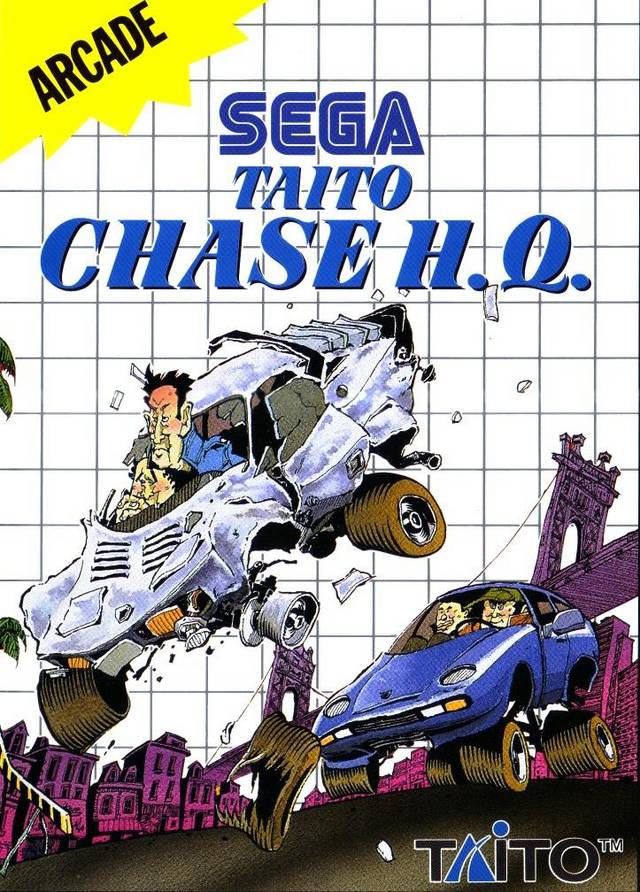
PLAYERS: 1
PUBLISHER/DEVELOPER: Taito
GENRE: Arcade/Racing
RELEASE DATE:
Master System: 1990 – (EU)
Game Gear: 03/08/91 – (JP), 1991 – (US)
Chase H.Q. provides awesome bouts of criminal-chasing action, complete with fast cars, faster getaways, and excessive hairstyles. The game is the Master System’s answer to Rad Racer, but rather than racing for your own vainglorious pursuits, you race to stop horrible people from committing further atrocities. It’s a wild ride, but fifteen minutes and five levels after it all starts, it’s all over, and you’re back at H.Q. wondering if speed, bad guys, and hair are all there is to life.
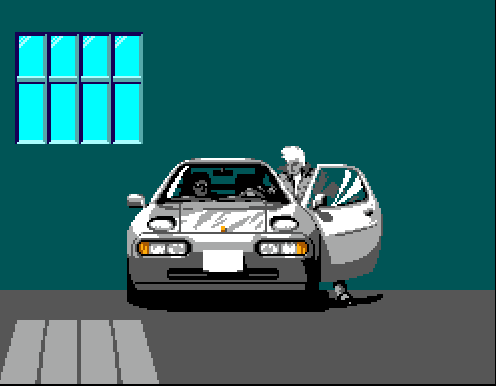
You control a blue sports car powered by Tony “Good Boy” Gibson and his partner, Raymond “Big Shot” Broady. Once your faithful C.B. operator Nancy has given you your mission, you’re free to “do what it takes” to find your man. The goal of each mission is always the same: drive until you find the criminal, then ram recklessly into his car until it slows to a dead crawl.
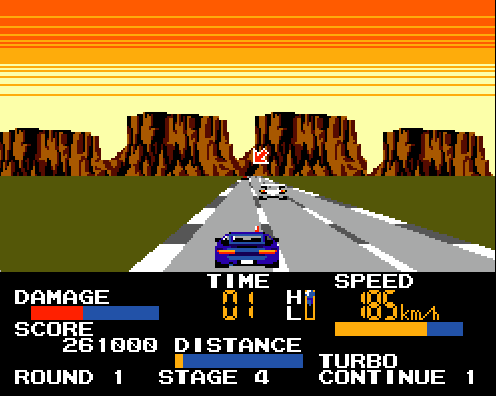
At the bottom of the screen is a meter that shows you how far the criminal is from your position. There’s also a time limit (usually between 60-75 seconds), and if it runs out, you’ll have to use one of the game’s three continues or start over. You’re given three turbo boosts at the beginning of each stage, which is great because the roads are full of twists and turns, cars that always seem to get in your way, road barriers, and other random crap that just slows you down. Thankfully, if you reach the criminal’s position before your time runs out, you’ll be given an additional 60 seconds to drive his reckless butt to the curb.
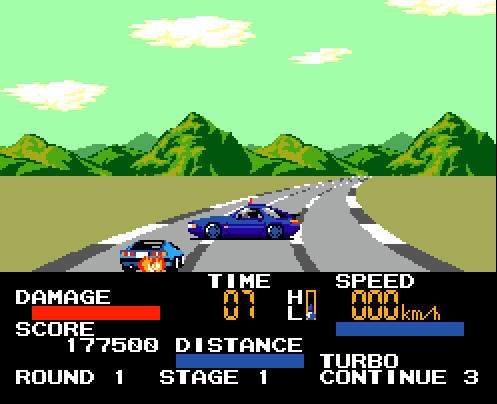
After every mission, you’re taken to a menu that lets you upgrade your car with the points you earned on the previous mission. Selecting “Oil” will increase your speed by 10km/hr, while equipping “Tires” will give you better handling. Upgrading “Bumper” means you can hit the criminals less before they relent. “Turbo” gives you an extra fourth Boost for the road (it costs a lot of points, though, and isn’t really worth it) and “Supercharger” makes your car faster for the entire mission. The upgrades disappear after you complete one mission, but you’ll almost always get enough points to upgrade your car again for the next round.
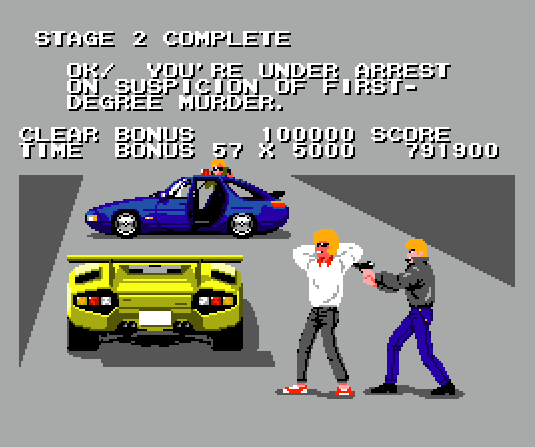
Drive fast. Chase cars. Upgrade your ride. These three ingredients make for the perfect arcade racer formula. Indeed Chase H.Q. is one of the most satisfying racing experiences on the Master System – and this fact makes its obscenely short length all the more depressing. I understand the arcade game only had five levels as well, but surely Taito could have added a few extra missions for the port? Either that or increase the game’s difficulty; even the last couple missions are a breeze if you have enough points to equip the Supercharger. Chase H.Q. thrills while it lasts, but there’s just not enough content to satisfy my urge for speed demon, feathered-hair-flying, wind-beneath-my-wings justice.
C+
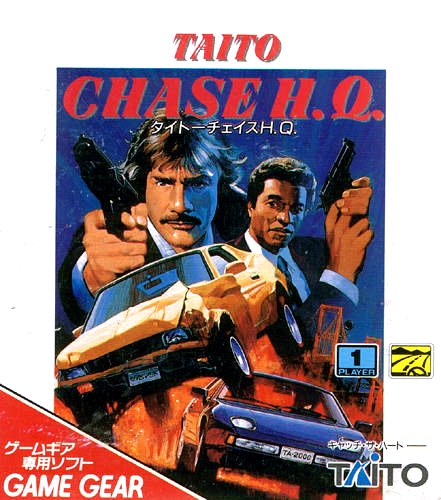
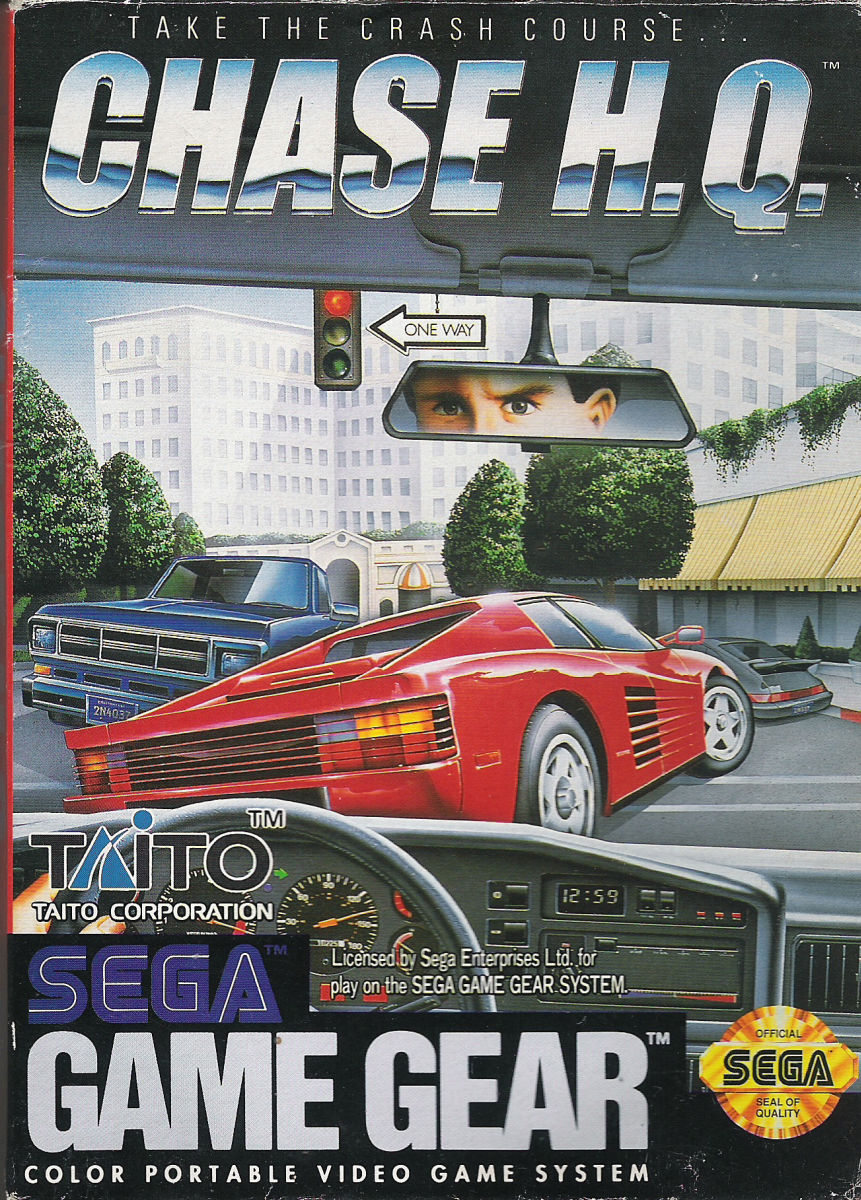
Chase H.Q. looks and plays just like the Master System version. By gar, it is the Master System version. The Game Gear port does run a touch smoother, and you can technically take it with you, if you want to lug your not-as-portable-as-you-remember Sega handheld out of the house, but I wouldn’t recommend it; AAs aren’t any cheaper today than they were in the 90s, don’tcha know.
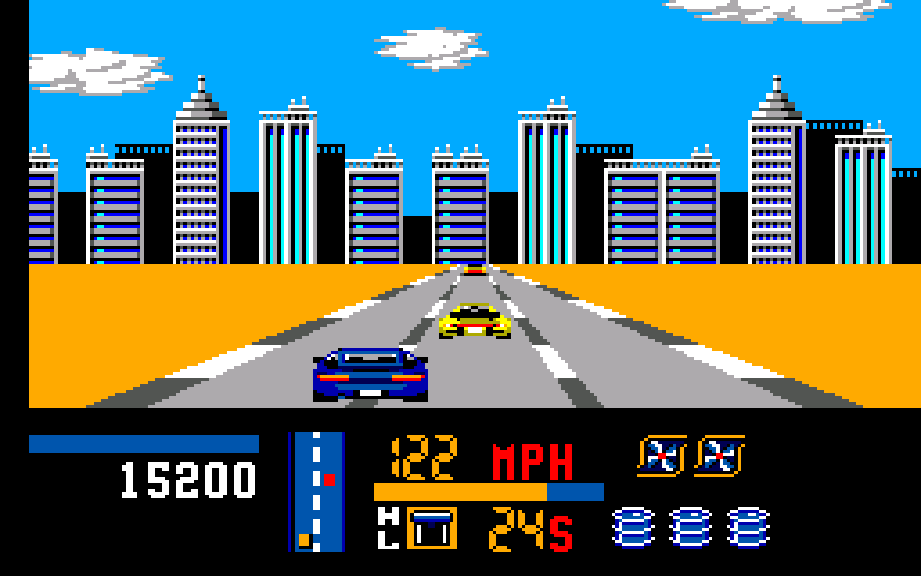
Since the Master System version never released outside of Europe, the Game Gear port is the first time this 8-bit rendition of Chase H.Q. was seen in Japan and the U.S.. My feelings for the game remain the same – it’s a superb arcade racer with a severe lack of content – but since I’m much more inclined to play a game for 10 minutes on a handheld than I am on a home console, I dare say Chase H.Q. is a better fit on the Game Gear.
B

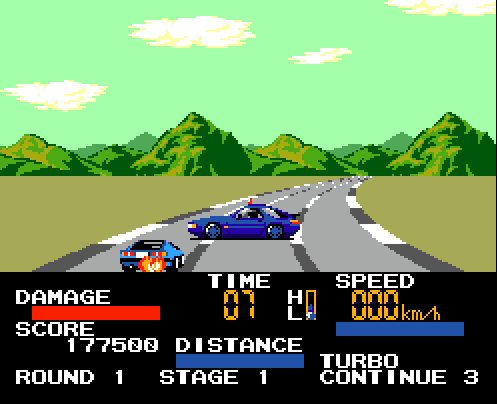
4 replies on “Chase H.Q. (MS/GG, 1990-91)”
I grew up with Chase HQ on the Sinclair Spectrum where it’s one of the systems premier titles.
I really enjoy the game, unfortunately the Master System version is very easy in comparison.
The Spectrum version took multiple attempts and repeat plays to beat, it is the same five levels but it retains the arcade versions challenge.
I played the Master System version following a session on the Spectrum port and completed it on my first go. I like the upgrade system added to this port as it add’s a bit of depth but the lack of challenge it’s a bit of a dampener. The game is still fun but I would have felt jipped paying full price for this one.
Also the audio seems really weak (even for a Master System) on this one.
Great review Dylan. Hope you and everyone who follows Sega Does have a great 2018.
Good to know about the Spectrum version, I wondered if other versions of Chase H.Q. were this easy or if it was just a Sega port thing.
Thanks for the kind words, Sut, 2018 is going to be great. Hope you have a fantastic year as well!
Let the Chase H.Q. vs. Battle OutRun debate begin.
I like video game debates !
I think Battle Out Run looks and sounds much better it also has a smoother game engine. But Chase HQ is definitely the superior gameplay wise.
The difficulty levels are polar opposites Battle Out Run is frustratingly difficult and Chase HQ is ridiculously easy.
So my vote goes to Chase HQ.